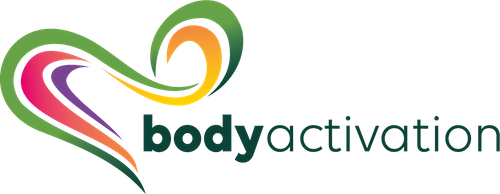What is Mental Rehearsal?
We love the phrase Mental Rehearsal (MR) which we use to describe a persons ability to use their imaginations, senses and self talk to mentally rehearse movements and physical activities before they actually move.
- There is a great deal of documented evidence about the success of MR in:
- Speeding up the recovery from injury of sportspeople
Enhancing the performance and building the confidence of athletes and musicians
Why is MR so successful?
Because our brains cannot tell the difference between an actual physical event and a vivid visualisation of the same event. Astonishingly the neurochemistry is the same. MR complements and reinforces physical exercise and activities to help improve performance, build confidence and achieve goals.
Mentally rehearsing a desirable outcomes helps to:
- Boost confidence – we feel confident about carrying our a task because we have already ‘completed it’
- Motivate ourselves to achieve
- Improve focus – because we can fine tune our movements
- Practice movements – over and over again
- Imbed sequences – and develop strategies
- Increase strength – because our muscles respond as if we have actually moved
- Improve reaction times – we learn how to respond quickly
- Re-wire our brains – to imagine a new way of being
- Make epigenetic changes in our bodies – our physicality responds to our imagination
By incorporating MR into our clients rehab, we are helping them to utilise the amazing power of their brains to retrain their bodies to respond to enabling thought patterns and in so doing activate positive emotional responses which encourage and inspire them to continue with ongoing practice.
What is Vivid Visualisation?
In order for MR to be effective we need to use all our internal senses and create mental images which are vibrant and alive and then fully immerse ourselves in the created experience.
This complete vivid experience is the preparation we need to help us excel in the exercises and activities we are about to do. It’s essential that our clients:
- Associate into their bodies and look out into the world (being disassociated bystanders will have far less impact)
- Use all their senses to create a complete sensory experience which is life like and compelling
- Mentally Rehearse on a regular basis throughout the day
- Incorporate these mental rehearsals into relaxation times
Components of Mental Rehearsal
MR works when we:
- Have defined and inspiring goals that we want to visualise and embrace
- Utilise our preferred learning style (visual, auditory, kinaesthetic)
- Build vivid visualisations using impactful visuals, sounds, smells, tastes and physical sensations
- Utilise a breathing relaxation before beginning the mental rehearsal
- Visualise ourselves achieving the goals,
- Mentally rehearse the specific movements, skills, techniques, steps and techniques
- Self Talk – affirmations and self talk that reminds us about who we are and where we are going
- Emotional response – tap into the emotional responses the visualisation creates
- Build in positive mindset exercises like gratitude journals
Charlotte’s Story :
Charlotte is a keen gardener and after her stroke she struggled to stand for long periods of time. This meant that she couldn’t stand in her greenhouse and pot out her seedlings. Her goal was to walk down to the greenhouse and pot up her tomato plants. Charlotte created a vivid experience of standing in her greenhouse. Alongside imagining the movements of her body, Charlotte’s visualisation also contained; the smell of the soil and the plants because it makes her smile, the feeling of the soil on her hands and the feeling of relaxation and peace she experiences when she’s potting out her plants.
Charlotte values this thinking time as she calls it, because not only is she preparing for the time when she will walk down her garden, she is also benefiting from the joy of experiencing it right now sitting in her chair. She rehearses every tiny hand and leg movement and as her confidence has grown with her visualisations she is learning how to use her self talk to reinforce her confidence and relaxation. She is also keeping a gratitude journal to celebrate what she is achieving and how she is feeling.
How can you use MR?
Like us, you can weave MR into the exercises and activities with your clients during your hands on and tele-health sessions. You can use MR to:
- Enable clients to practice physical activities which they are physically challenged to undertake
- Manage pain and unpleasant physical sensations
- Help overcome anxiety and stress
- Build confidence and self belief
- Speed up the healing and recovery process
- Prevent the deterioration of physical skills due to injury and immobility
- Inspire and motivate our clients to undertake exercise and repetitive physical activity
We explore Mental Rehearsals along with other visualisation techniques in our Level 1 and 2 Practitioner Programmes
